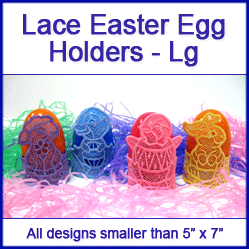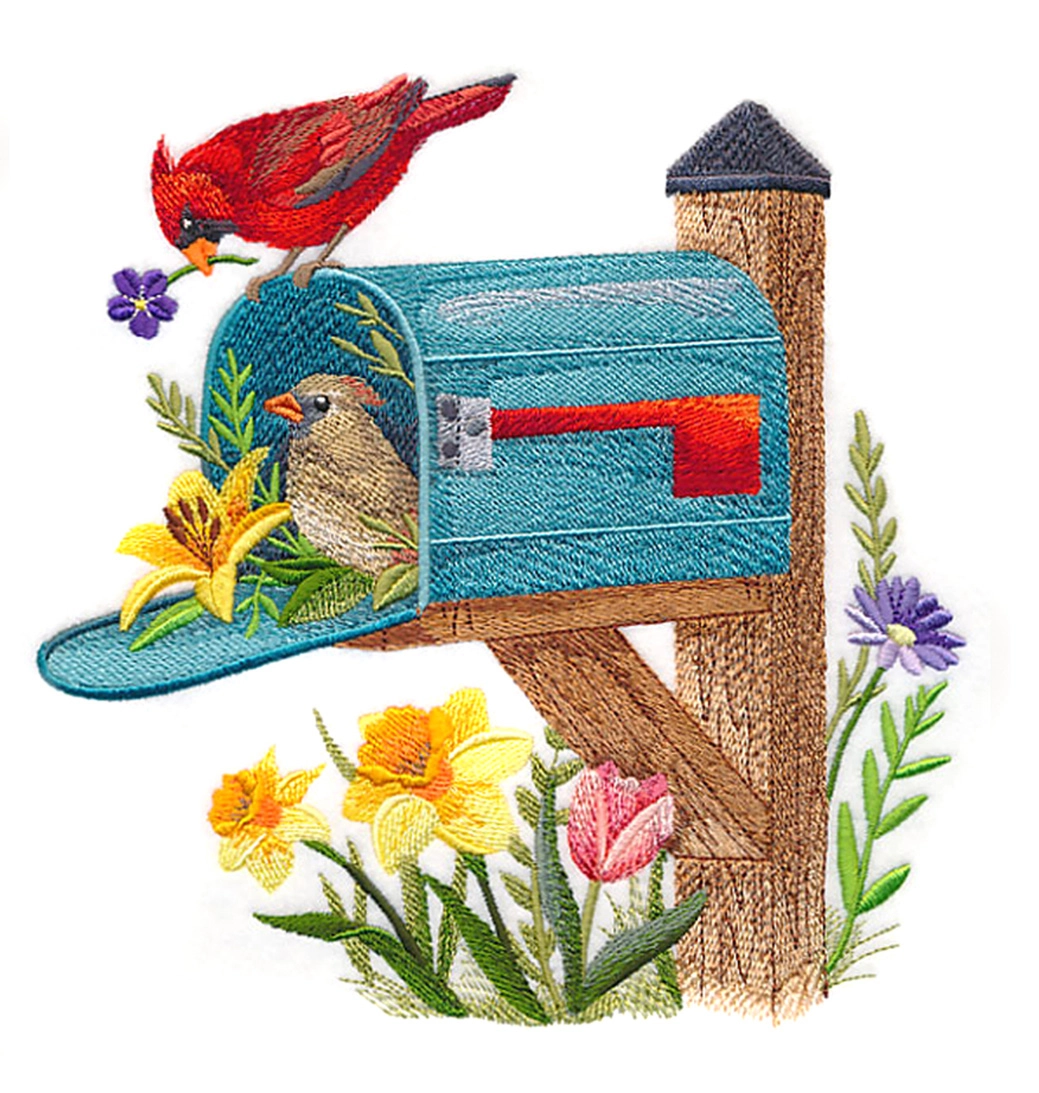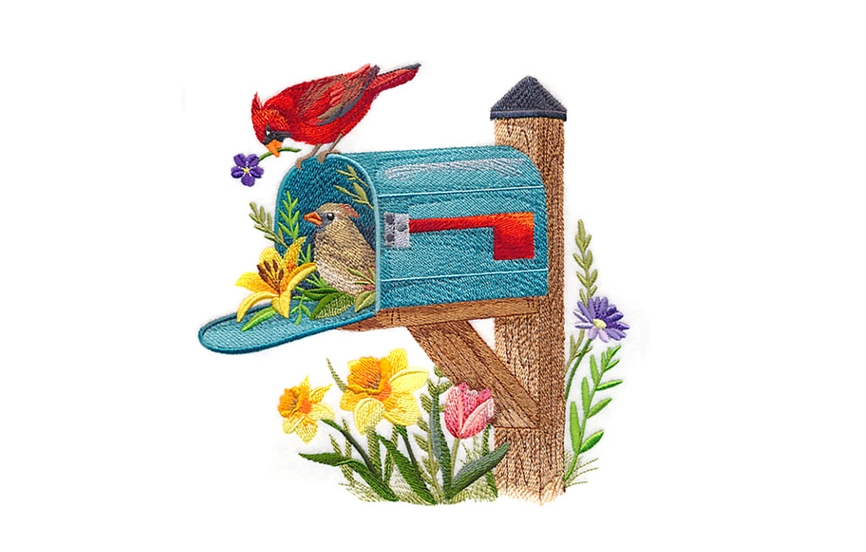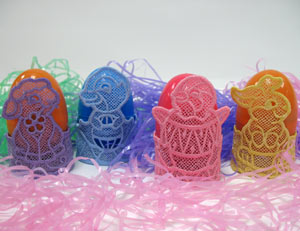
After an adventuresome Easter Egg hunt, proudly display egg treasures with lace holders. Quick and easy embroidery and assembly means less time at the machine...and more time hopping down the "Bunny Trail."
The plastic eggs used in this project instructions measure 5 1/8 inch in circumference.
Supplies
Supplies needed:
** Water-soluble stabilizer (WSS)
** Paper towels
** Fabric Glue
Designs Used:
** Lace Easter Egg Holders Design Pack -- Lg
** Lace Easter Egg Holders Design Pack -- Sm
Special Project Notes:
You can use either 40 weight rayon thread or 30 � 35 weight cotton thread.
I use Coats and Clark 30 and 35 weight cotton thread. It's labeled as Mercerized ELS Cotton for Machine Quilting & Crafts; Machine Quilting; or All Purpose. I find Coats and Clark cotton thread at JoAnn's. I've also used Madeira Cotona, which is a 30 weight cotton thread.
I use the 30 - 35 weight cotton thread both in the bobbin (I wind my own bobbins) and in the top (needle).
A note about water-soluble stabilizers and needles:
There are many, many different brands of water-soluble stabilizer available. Some are thin and light, some are fibrous, and some are thick and heavy. It can be confusing to pick the right one for your lace project.
We've digitized and stitched thousands of freestanding lace designs, and have consistently excellent results with Sulky Ultra Solvy (the heavy weight water-soluble stabilizer by Sulky) and Vilene, a fibrous water-soluble stabilizer. We order Vilene from www.pointetopointe.com.
Use a sharp needle (as opposed to an embroidery needle) when embroidering onto water-soluble stabilizer - especially if using the "plastic-looking" kind (such as Sulky Ultra Solvy). An embroidery needle has a larger point, which makes larger holes in the water-soluble stabilizer, leading to tearing and misalignment.
Designs Used
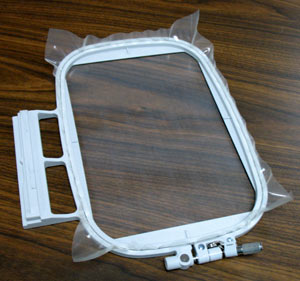
To embroider freestanding lace, hoop one piece of water-soluble stabilizer (WSS).
We used Sulky Ultra Solvy.
Kenny has tested different brands of WSS to see which works best on different projects. To see how different brands hold up when used for freestanding lace, click here.
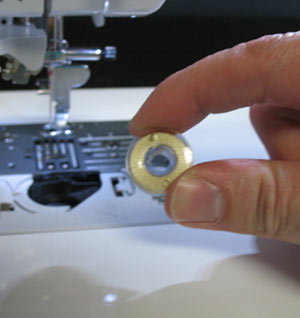
Because both sides of freestanding lace can be seen, the bobbin thread should match the top thread.
Wind a bobbin with the same thread that you'll be using in the needle.
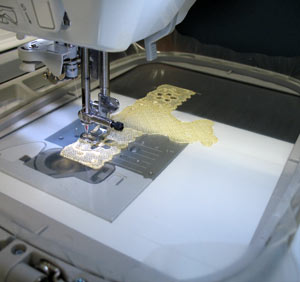
Attach the hoop to the machine and embroider the design.
We use a size 11 sharp needle when embroidering freestanding lace. Using a universal or ballpoint needle can cause the WSS to tear or rip.
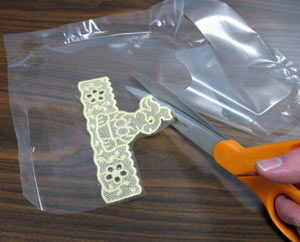
After finishing each design, unhoop the WSS and cut away the excess. Trim as close to the embroidery as possible without cutting any of the stitches.
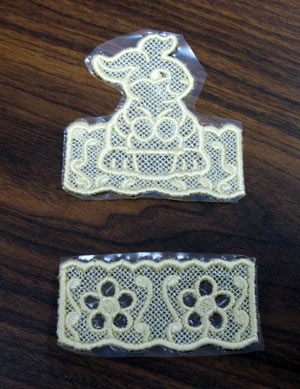
If you are sewing the files for a 4 x 4 inch hoop, there are two sections to the design. Embroider both sections.
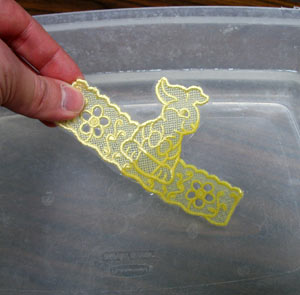
Soak the lace in hot tap water.
For Sulky Ultra Solvy, soak for 15 minutes.
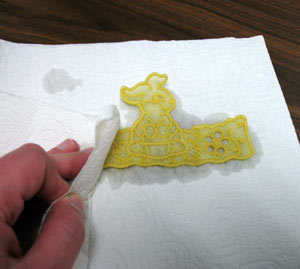
After soaking, blot the lace with paper towels. Allow the lace to dry completely.
(We have found that it is easier to soak the design pieces and allow them to dry before assembling them into a holder.)
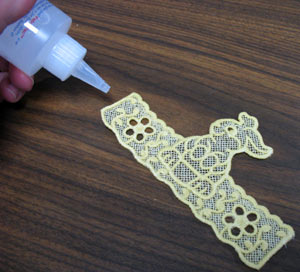
When the lace is dry, apply fabric glue to one end of the holder.
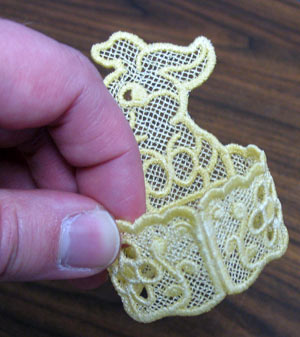
Brings the ends together and hold in place until the glue sets.
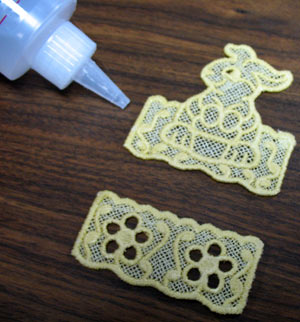
For the 4 x 4 inch design pieces, apply glue to one end of the tall piece.
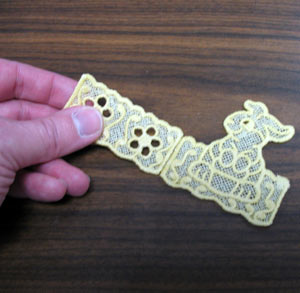
Add the rectangular piece to the tall piece with the same sides up, matching the top and bottom patterns together. Allow the glue to dry.
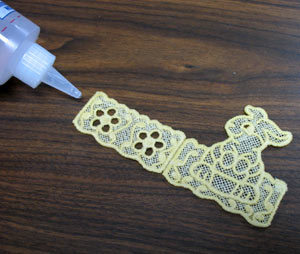
Apply fabric glue to the end of the rectangular piece.
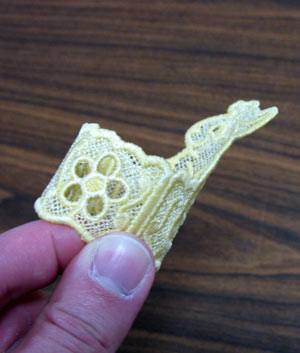
Bring the ends together and hold in place until the glue sets.
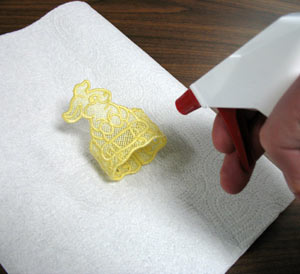
To make the lace more rigid, you can spray it with starch.
Starch can be made by dissolving a few strips of WSS in water. Lightly spray the lace, blot it with a paper towel and allow it to dry completely.
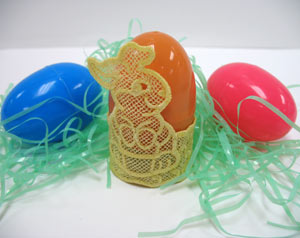
And there you have it! Add a plastic egg, a dyed egg, or any decorative egg you can find!
